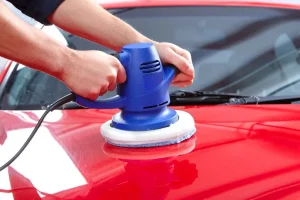No matter if it’s liquid, paste, or spray wax; quality car wax will give your vehicle an exquisite shine. But it’s essential that you follow all steps properly in order to prevent unsightly streaks.
Start off by cleaning your car thoroughly and making sure to address problem areas such as bug splatter and bird droppings immediately.
Prep Your Paint
Before using paste, liquid, or spray waxing solutions on your vehicle, it’s crucial that it be properly prepared beforehand. This means washing, drying, clay barring (if applicable), iron removal treatments as required ( if applicable), as well as an IPA cleaner solution on paintwork to eliminate any contaminants.
Quality car wax provides protection for your paint from elements, light scratches and fading while adding depth of color and sheen, keeping your vehicle looking new for longer. However, improper preparation for waxing may result in streaked and duller finishes than intended.
Preparing your car for waxing starts by ensuring the paint surface is free and clear of contaminants – this means removing old waxes or sealants as well as decontaminating it using mild polishing compounds or rubbing compounds.
Once the surface is clean, it’s time to apply your first layer of wax! Make sure you work in a shady location and follow all instructions given with your product. If using a DA polisher machine, start with coarse pads before transitioning towards finer ones as you progress. It is also wise to work in small sections at a time in order to prevent your car from overheating while helping ensure even coverage without uneven spots or streaks.
Apply the Wax
Waxing your car will provide it with extra protection from environmental pollutants, UV rays and harsh weather conditions like rain, snow and hail. Wax creates an invisible shield between its paint surface and these elements – protecting it while making cleaning simpler! Be sure to read all instructions and package inserts that come with the wax you choose for application instructions as these will offer guidance as to how thick of a layer to apply and when.
Start with a clean and completely dry vehicle, working section by section using the foam applicator pad supplied with your product to apply a thin coat of wax using its foam applicator pad. A silver dollar-sized amount should cover each 2-foot by 2-foot section; check product instructions for more specifics. Be sure to work on cool surfaces to minimize temperature differences as much as possible while also being mindful not to let direct sunlight touch the wax while drying (at least until its set!). Avoid direct sunlight as much as possible for best results (or at least be wary not let direct sunlight touch its drying effects).
Dependent upon the product chosen, you may require using a cloth or soft, nonabrasive sponge to rub in it gently on existing blemishes and dull spots. Most products offer gentle rubbing compounds while some offer “cleaner waxes” which remove fine layers of clear coat in order to smooth surfaces more quickly and efficiently.
Once applied, wax will quickly dry, becoming matte and chalky in appearance and more hydrophobic; water beading up and rolling off instead of adhering to its surface.
Remove the Wax
Any car wax left on your car after buffing will prevent the new sealant from bonding to its intended paint and providing its intended protection, which could result in an inferior shine that doesn’t last very long.
To identify whether there’s still wax on your vehicle, first inspect its surface visually – it should look glossy and well-protected with good depth to it. Alternatively, pour water onto it and observe how fast droplets form and run off; if any are sticking around for any length of time on the paintwork there could still be wax residue present that needs to be eliminated from it.
An effective way to remove car wax is with a non-abrasive clay bar. These specialist detailing tools are designed to lift surface contaminants off your vehicle without harming its paint or clear coat underneath, including any abrasive wax layers. To use one effectively, start by washing and drying as usual before adding either quick detailer lubrication or clay lubricant as lubricants.
Hand or machine applications of clay bar applications should always follow instructions closely and strictly adhere to instructions given. As misuse may cause serious damage, it’s wise to work with someone who knows how best to utilize one.
Maintain Your Shine
No car cleaning session would be complete without waxing; the last step to add gloss and protect freshly washed paint from road-borne hazards. Waxing requires patience and skill for optimal results that provide lasting protection. By applying it correctly for maximum effect.
Before selecting a wax product, it is important to carefully consider your priorities when making your selection. Different products offer various benefits such as protection from UV rays and increased shine as well as providing abrasion resistance. Reading reviews from fellow car enthusiasts is also beneficial when narrowing down your choices.
Dependent upon the type of wax you choose, application may either be done manually or mechanically. When applying by hand, use either a foam or microfiber applicator pad for optimal results; when using a machine follow its manufacturer’s instructions to apply the product in an even layer before leaving to dry (haze) before buffing with a clean microfiber towel. If any residue remains after buffing is complete, park it under sunlight for 10-15 minutes to warm it up further and promote deeper and glossier results.
Spray waxes offer quick application but typically don’t provide as much protection than paste or liquid waxes.
